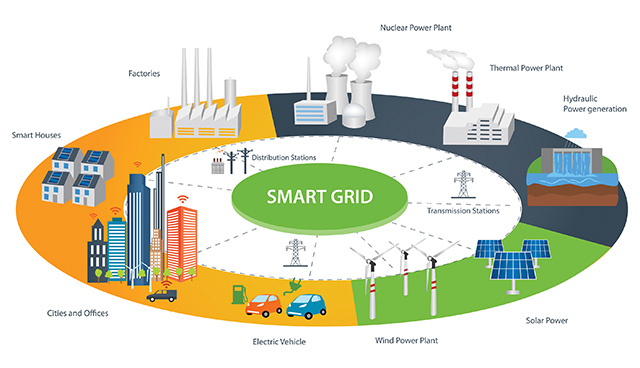Smart grid evolution

 While the smart grid is not a new concept, new technologies are transforming the grid edge and creating a platform for transformation of the traditional electricity grid functions.
While the smart grid is not a new concept, new technologies are transforming the grid edge and creating a platform for transformation of the traditional electricity grid functions.
At its core, the smart grid is the use of emerging technology to promote energy and cost efficiency. A smart energy network, automatically reading and reacting to supply and demand changes offers the potential for greater security of supply through efficiency.
When coupled with the roll-out of smart meters, the potential for efficiency is even greater as consumers adjust their own real-time demands and accelerate the integration of renewable energy into the grid.
With this in mind, the EU has set a target of 80 per cent of existing electricity meters to be replaced by 2020, estimating a potential emission reduction across the EU by up to 9 per cent and a similar reduction in annual household energy consumption.
The EU’s ambitions were set out in the context of a technology and innovation-led transformation of the electricity system. The World Economic Forum (WEF) have identified three key trends which are disrupting traditional models from generation to beyond the meter. These are:
• electrification of large sectors of the economy such as transport and heating;
• decentralisation, spurred by the sharp decrease in costs of distributed energy resources (DERs) like distributed storage, distributed generation, demand flexibility and energy efficiency; and
• digitalisation of both the grid, with smart metering, smart sensors, automation and other digital network technologies, and beyond the meter, with the advent of the Internet of Things (IoT) and a surge of power-consuming connected devices.
Explaining how each of these elements are complementing each other in development, the WEF says: “Electrification is critical for long-term carbon reduction goals and will represent an increasingly relevant share of renewable energy. Decentralisation makes customers active elements of the system and requires significant coordination. Digitalisation supports both the other trends by enabling more control, including automatic, real-time optimisation of consumption and production and interaction with customers.”
The three trends are being driven by a variety of factors, however, the most notable are their decreasing costs, their enablement of innovative business models and, as the WEF states, “the sizeable improvement to the asset utilisation rate of the electricity system”, using electric cars as an example of an area for potentially large growth.
The societal and economic benefits of integration of these trends are also wide-ranging. Previous analysis by the WEF estimated that the transformation of electricity over the next decade could generate $2.4 billion in value. As well as economic benefits such as job creation and societal benefits such as environmental improvements, the WEF also indicates the potential for creating greater social energy balance by utilising grid edge technologies to support low-income households.
Challenges
The Forum identifies four main challenges in securing an efficient transition towards a new electricity system, pointing out that failure to do so could result in the stranding of network assets and ultimately customer deflection from the grid.
Outlining the challenges, it says: “First, electricity is still largely perceived only as a commodity, making customer engagement in new technologies a costly and difficult endeavour. Second, the current regulatory paradigm hinders distributed resources from providing their full value to the system. Third, uncertainty around rules prevents key stakeholders from deploying enabling infrastructure that could complement the grid as the backbone of the future electricity system. Finally, some segments resist a cultural change towards a different allocation of roles and new business models.”





